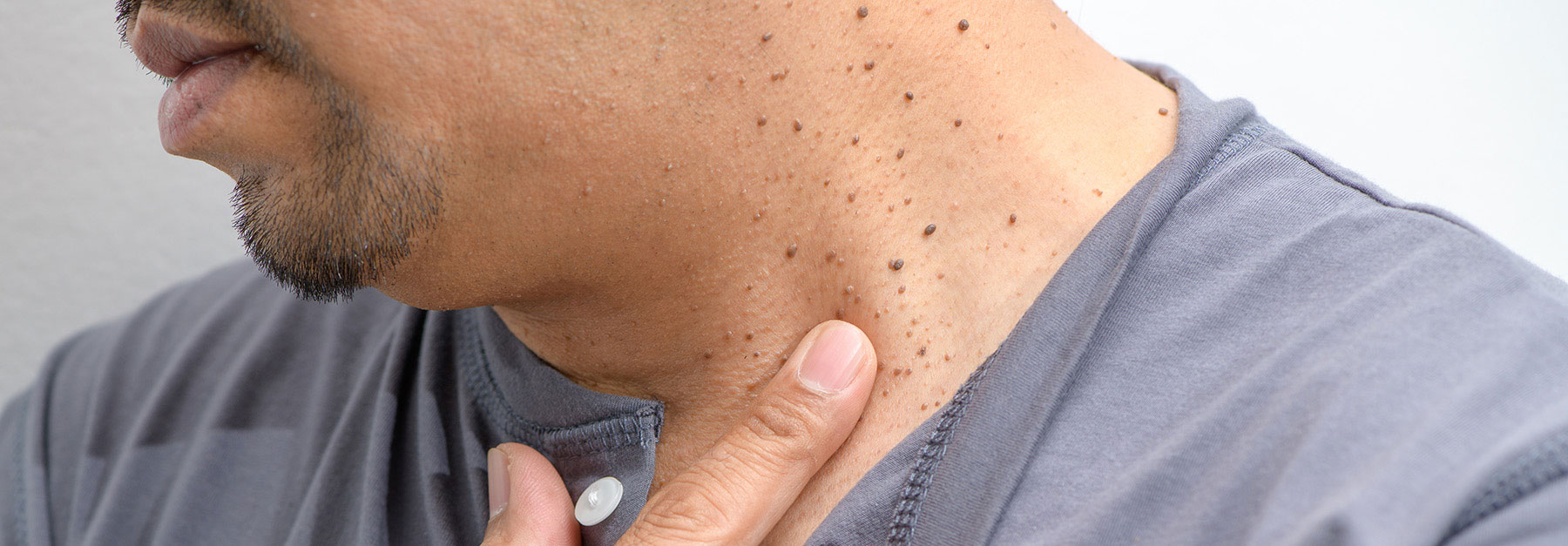Skin Tags are Annoying, But Harmless

Skin tags are usually very small elongated flaps of tissue that hang from the skin on a tiny stalk. These irritating small growths on your skin are more common as you age. They usually appear in areas of friction with tight clothing or where your skin forms folds, such as on your neck, underarms, midsection of your body, or on your eyelids, and inner thighs.
Discovering skin tags for the first time can be alarming, but don’t worry, says Shasa Hu, M.D., a dermatology and cutaneous expert at the University of Miami Health System. “Skin tags are totally benign, meaning they are not cancerous and they won’t turn into cancer. Probably half of people will develop them as they age. However, if you don’t know what they are and you’re just noticing them, they can be worrisome.”
They may appear alone or several together and can vary in size.
Skin tags are more common if you:
- Are overweight
- Have diabetes
- Are pregnant, possibly due to hormonal changes and high levels of growth factors
- Have certain types of human papilloma virus (HPV)
- Have hormone imbalances
- Have close family members also have skin tags
Because skin tags are harmless, there’s usually no medical reason to remove them unless they bother you.
If you have a new skin tag, or you are not sure what it is, you should show it to your dermatologist. Don’t assume everything is a skin tag.
Dr. Shasa Hu
Always be vigilant when you notice a change in your skin’s appearance in order to rule out more serious health concerns, like cancer. Have your dermatologist look at each one, particularly if one:
- Becomes irritated for no apparent reason
- Changes color
- Grows quickly or bleeds for no reason
- Causes discomfort
Treatment for skin tags
If your skin tag is in an area that gets rubbed and irritated by clothing, such as a bra strap, or is unsightly because of its location, your dermatologist can remove it.
Generally, they use one of three methods: They may scissor it off at the stem or use a small scalpel. They can also freeze it with cryotherapy or burn it off. If your skin tag is on a particularly delicate areas, such as the eyelids, may require treatment by an ophthalmologist or other specialist.
Dr. Hu doesn’t recommend using over-the-counter remedies because of the danger of skin infection or skin rash from the product. “My major concern, however, is that if you treat it yourself and a dermatologist doesn’t look at it, it may not be a skin tag. Since tight clothing can irritate it, make sure you wear loose clothing until you see your dermatologist and decide what to do.”
Mary Jo Blackwood, RN, MPH, is a contributing writer for UMiami Health News. Based in St. Louis, MO, and Colorado, she has written medical articles and webpages for consumer publications and major university health centers.
Tags: causes of skin tags, cryotherapy, Dr. Shasa Hu, excision
